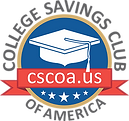Multilingual classrooms in practice
When discussing the topic of the language of education, there are two lessons we must keep in mind. First, children learn best when they are taught in languages that are familiar to them.

Familiar languages are those that are commonly spoken and heard in their immediate environment, such as their native language. Second, to participate in an increasingly global world, it is important that children are equipped with additional language skills, such as lingua francas, to be able to access opportunities locally and globally. The concept of teaching children in languages they understand, while also equipping them with the language skills they need to access opportunities. is referred to as mother tongue-based multilingual education (MTB MLE).
Incorporating this approach in classrooms can take various forms. In this blog, as we celebrate International Mother Language Day, we discuss the two primary ways in which MTB MLE principles can be applied.
Classrooms can be broadly divided into two categories: those that are linguistically homogenous (students speak the same languages), and those that are linguistically heterogeneous (students speak multiple languages).
Linguistically homogenous classrooms often exist in rural communities where students speak the same language(s) given their shared language background. In such a classroom, it is possible to adopt a three-stage model.
At the first stage, the primary goal is to build strong conceptual and linguistic foundations. A strong foundation equips the child with the ability to learn, academically, linguistically, and otherwise, in years to come. For this stage, research recommends that children be taught in the language(s) most familiar to them.
The second stage prepares the child for a gradual transition into multilingual competencies. Having developed a strong foundation for learning, a child is now able to gradually move towards learning other languages. The gradual transition eases the learning process and provides support for the child as they expand their repertoire. The classroom may adopt multilingual education models where children are taught in multiple languages.
The third stage focuses on strengthening the child’s conceptual and linguistic skills with the aim of preparing them for future academic endeavours. By this point, the child has already developed a strong learning foundation and achieved multilingual competencies and requires practice and polishing to strengthen these skills. These later years of education may be taught in lingua francas, or in languages most useful to access opportunities for higher education and employment within and beyond the local community.
An example of these three stages in practice is visualized below, in a language progression plan for Tharparkar, a linguistically homogenous community in Sindh, Pakistan. In the early years, children are taught in the language most familiar to them (Dhatki and Sindhi), leading to multilingual instruction in grades 4 through 7, and transitioning to instruction in the official languages of Pakistan, and the languages of higher education and employment, Urdu and English, in their final years of education.
Linguistically heterogeneous classrooms are often located in urban communities or in linguistically heterogeneous areas where a single classroom has students speak many different languages as they are from various different ethnic and linguistic backgrounds. In such communities, it is essential to identify a shared familiar language. While this language may not be the native language of all students, it will be understood and spoken with familiarity by all students. This language, in many cases, is a regional or a national language. Teaching in a shared language allows children to reap the benefits of learning in a familiar language without segregating the classroom into separate language groups. This is particularly relevant for contexts such as Papua New Guinea, where over 800 languages are spoken, and refugee camps where children from various linguistic backgrounds live.
However, it is important to ensure that, in the process of adopting a shared familiar language, we do not erase the multilingualism that exists within the classrooms. Multilingual classrooms can foster mutual learning, cultural integration and valuing of diversity. No child should be penalized for speaking in their own language, but rather encouraged to share it with their peers and create an environment of multilingual inclusion and respect. Some ways of incorporating the native languages of students in a linguistically heterogeneous classroom include students sharing stories in their own languages, inviting native speakers of various community languages to share their culture in the classroom, and having students complete activities that involve engagement of their native language, such as activities based around translations.
Making language decisions
While most classrooms can be divided into the above categories of linguistically heterogeneous and homogeneous, there are also many classrooms that fall somewhere in between. To identify the most suitable MTB MLE practices for any classroom, we must first consider the following factors:
Language demographics and exposure: What language(s) are students regularly using (hearing, speaking, reading, writing)? What language(s) are they exposed to in their local communities?
Teacher capacity: What language(s) are teachers fluent in? Which one(s) are they trained to teach in?
Community willingness: what are the community aspirations for their children? Will they be willing to adopt multilingual instruction?
Future aspirations: what language(s) do students need to know to participate meaningfully in higher education and/or future occupations?
The answers to these questions, coupled with necessary trial and error, are useful to guide educators to identify and then implement the ideal classroom language practices.
Learning in familiar languages is possible and worthwhile. However, there is no one way of carrying this out. It is essential to remain creative and flexible while designing the language(s) of instruction in classrooms. Regardless of context, intentional efforts must be made to promote respect for language diversity and to de-stigmatize the utilization of one’s native language in the classroom. Not only will our children learn better in classrooms that embrace their languages and identities, but we will also see begin to create a kinder, more respectful, and beautifully multilingual future.



























Comments